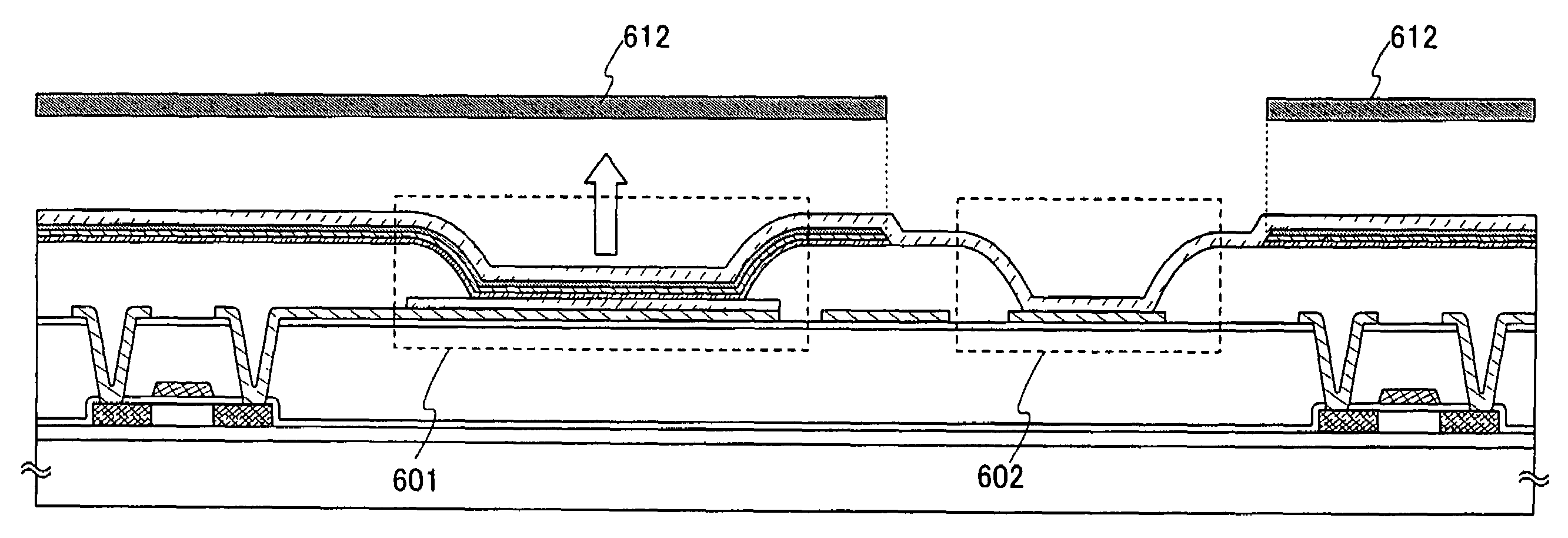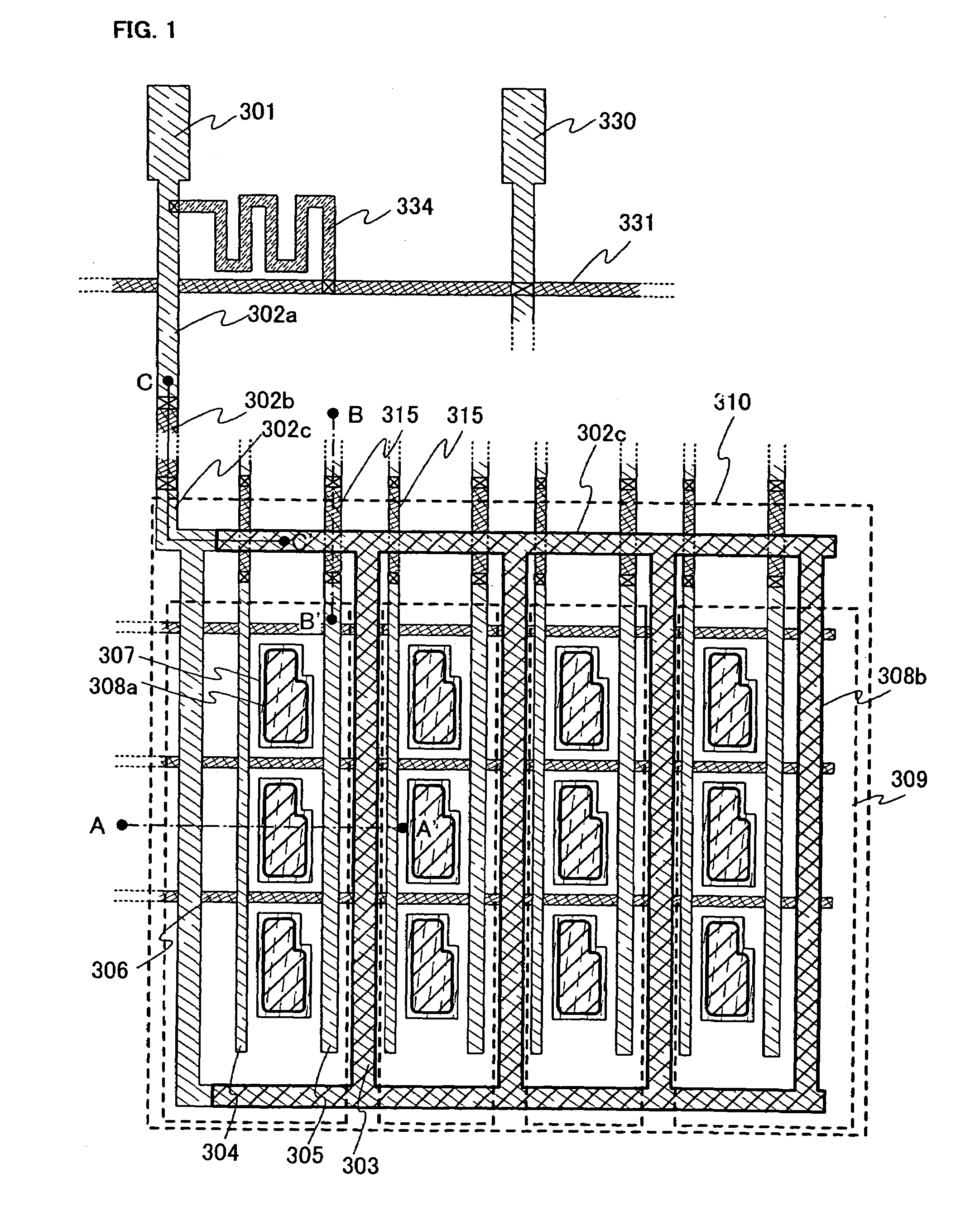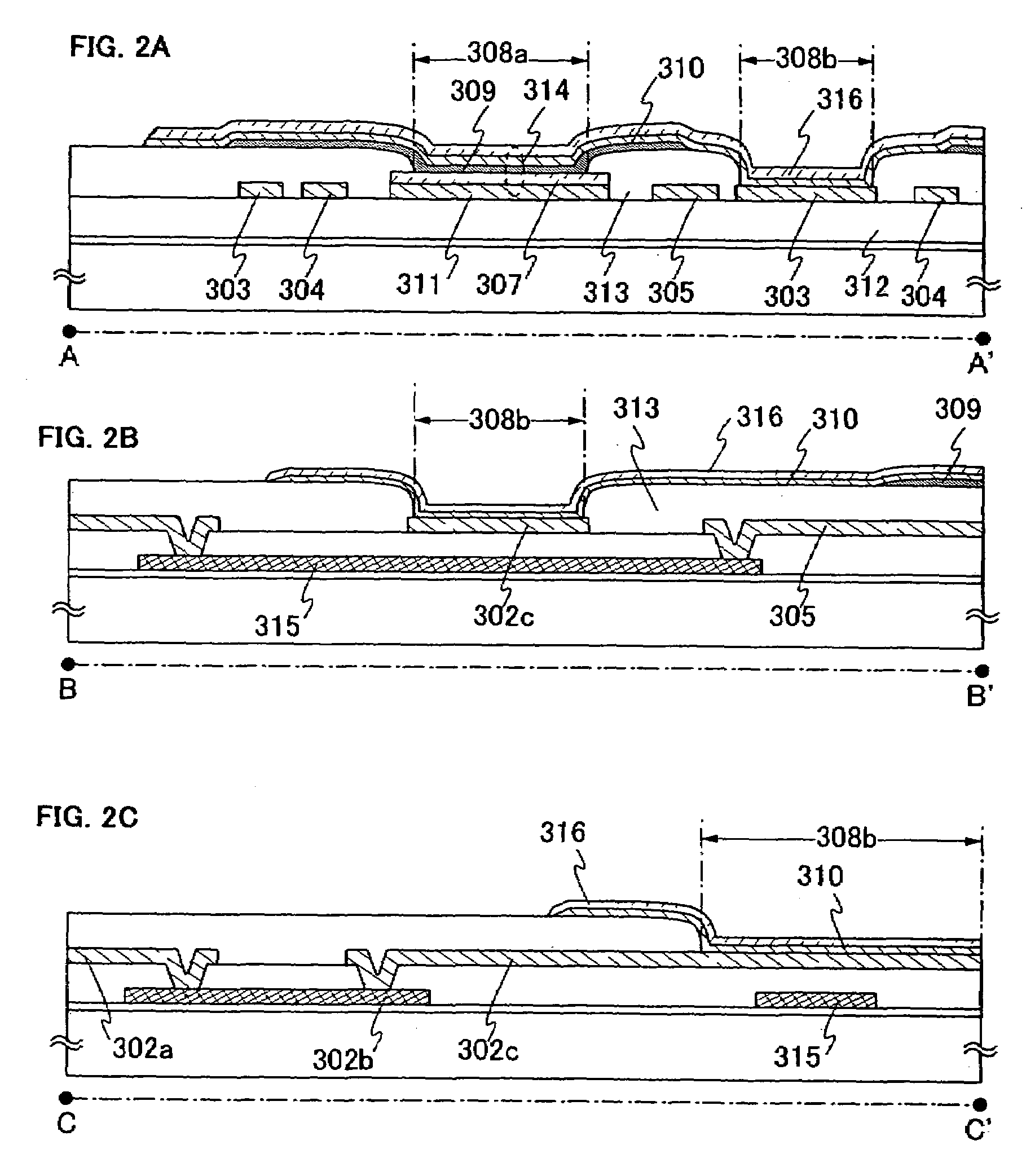Light emitting device and method for fabricating light emitting device
a light emitting device and light emitting device technology, applied in the direction of instruments, discharge tube luminescnet screens, non-linear optics, etc., to achieve the effect of suppressing the potential drop of a counter electrode, high precision and precise pattern
- Summary
- Abstract
- Description
- Claims
- Application Information
AI Technical Summary
Benefits of technology
Problems solved by technology
Method used
Image
Examples
embodiment mode 1
[0044]The configuration of a pixel area in a light emitting device of this embodiment mode will be described with reference to FIG. 1. FIG. 1 shows a top view of a pixel area and a leader wiring. Reference numeral 301 denotes a connection terminal, and reference numerals 302a, 302b, and 302c denote leader wirings. Further, an electrode 303 formed in the pixel area is equivalent to an auxiliary electrode, and the electrode is connected to the connection terminal 301 via the leader wirings 302a, 302b, and 302c. In FIG. 1, the connection terminal 301 and the auxiliary electrode 303 are electrically connected by using the three leader wirings of 302a, 302b, and 302c. However, the configuration of leader wirings is not limited to the configuration shown in FIG. 1, and any configuration may be used as long as the connection terminal 301 and the auxiliary electrode 303 can be connected electrically. All of a connection terminal, a leader wiring, and an auxiliary electrode may be formed fro...
embodiment mode 2
[0060]In this embodiment mode, a mode of a shape of an opening, which is different from the one in Embodiment Mode 1 will be described.
[0061]FIG. 3 shows a top view of a pixel area in this embodiment mode. Reference numeral 403 denotes an opening, and a counter electrode 404 and an auxiliary electrode 401 are electrically connected in an opening 403. In this embodiment mode, when an electroluminescent layer 405 is formed so as not to entirely cover the opening 403 by using a metal mask; thus, the auxiliary electrode 401 is connected to the counter electrode 404 directly or electrically in the opening 403. In this case, the end portion of the auxiliary electrode may be exposed in the opening, or may be covered with a second interlayer insulating film.
[0062]The end portion of the auxiliary electrode 401 may be exposed in the opening 403, and a part which is not covered by the electroluminescent layer 405 may be deliberately provided in the end portion by means of coverage thereby conn...
embodiment mode 3
[0066]In this embodiment mode, a mode in which a structure of a portion where an auxiliary electrode and a counter electrode are connected is different from that of Embodiment Mode 1 will be described.
[0067]The configuration of a pixel area in a light emitting device of this embodiment mode will be described with reference to FIG. 9. FIG. 9 shows a top view of a pixel area and a leader wiring. Reference numeral 101 denotes a connection terminal, 102a, 102b, 102c denote leader wirings, and 103 denotes an auxiliary electrode. As in FIG. 1, the auxiliary electrode 103 is electrically connected to the connection terminal 101 via leader wirings 102a, 102b, and 102c.
[0068]As in Embodiment Mode 1, a scan line 106, a signal line 104, and a power line 105 are provided in the pixel area. The wirings to be provided in the pixel area of the invention is not limited to the three wirings, and some other wirings than the above wirings may be provided depending on the pixel structure. Further, as ...
PUM
 Login to View More
Login to View More Abstract
Description
Claims
Application Information
 Login to View More
Login to View More - R&D
- Intellectual Property
- Life Sciences
- Materials
- Tech Scout
- Unparalleled Data Quality
- Higher Quality Content
- 60% Fewer Hallucinations
Browse by: Latest US Patents, China's latest patents, Technical Efficacy Thesaurus, Application Domain, Technology Topic, Popular Technical Reports.
© 2025 PatSnap. All rights reserved.Legal|Privacy policy|Modern Slavery Act Transparency Statement|Sitemap|About US| Contact US: help@patsnap.com



